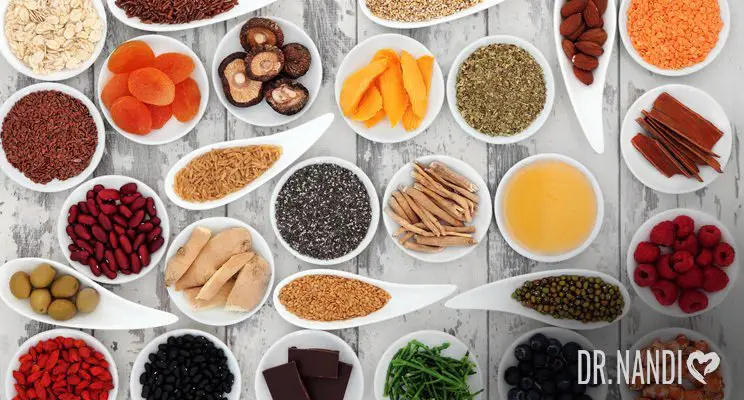In the bustling forums of kitchen connoisseurs and home chefs, a new hero has emerged in the realm of cooking gadgets: the air fryer. Its concept is refreshingly simple and yet, radically transformative. Imagine slashing the copious amounts of cooking oil, typical of traditional frying, down to just a spoonful or two. Yes, for those mindful of their health or those who cringe at the thought of oil-drenched foods, this is a game-changer.
But the magic of air fryers extends beyond just conserving oil. Unbeknownst to many, these handy devices may play a crucial role in our wellness, offering a hidden health advantage by curbing the creation of a notorious chemical in our food: acrylamide. Does this pique your interest? It should.
Understanding Air Fryers
At its core, the air fryer is a marvel of culinary engineering. It circulates hot air around the food, creating a crispy layer akin to deep-frying but with a fraction of the oil. This method has caused a stir for its promise of guilt-free indulgence.
But how does it fare in the realm of health, specifically concerning acrylamide, a compound that has raised alarms among health experts?
Acrylamide: The Hidden Health Adversary
When foods, especially starchy ones like potatoes, are subjected to high temperatures, acrylamide emerges, courtesy of the Maillard reaction. This reaction, which gives fried foods their delectable golden hue and satisfying crunch, unfortunately, also creates acrylamide when temperatures soar above 248°F (120°C).
Acrylamide isn’t just a subject of casual concern; it has captured the serious attention of food safety authorities worldwide. The Joint Food and Agriculture Organization/World Health Organization Expert Committee on Food Additives (JECFA) has flagged it as a potential health hazard, and the European Food Safety Authority echoed this sentiment in 2015, linking it to an increased risk of cancer. [1]
While air fryers have been lauded for their ability to reduce oil use, it’s the potential reduction in acrylamide formation that has caught the attention of health enthusiasts. Acrylamide, a chemical that can form in some foods during high-temperature cooking processes, is known to cause mutations and damage DNA, which may increase the risk of cancer. [2]
The Research on Acrylamide and Cancer
A plethora of studies have been conducted on acrylamide, especially given its classification as a potential carcinogen by rodent studies. These studies have shown that acrylamide exposure increases the risk for several types of cancer in rodents due to its conversion to glycidamide, a compound that causes mutations in DNA1. However, the translation of these findings to human health has been inconsistent. After decades of research, the consensus remains somewhat elusive.
A meta-analysis from 2020 indicated a positive association between dietary acrylamide exposure and the risk of certain cancers, like endometrial and ovarian, particularly among women who have never smoked. [3]
Yet, the broader body of epidemiological evidence paints a more complex picture. Although in vitro and animal studies have labeled acrylamide as genotoxic, mutagenic, and carcinogenic, studies in humans have shown an inconsistent relationship between dietary acrylamide exposure and the risk of various cancers, including those of the prostate, gastrointestinal tract, and lungs. [4]
Most reviews, including a recent systematic review, found no clear association between dietary acrylamide and the risk of most types of cancer, with some exceptions, such as a reported positive association with ovarian cancer. [5]
What does this mean for air fryer aficionados? While the science is still evolving, the current evidence suggests that while acrylamide is a concern, its impact on human cancer risk is not conclusively determined. This underscores the importance of smart cooking practices to mitigate potential risks without succumbing to undue alarmism.

Tips to Reduce Acrylamide in Air-Fried Foods
Embracing your air fryer doesn’t just mean enjoying the convenience; it’s also about adopting healthier cooking habits. Let’s explore how you can minimize acrylamide production while still relishing the crispy textures that make air-fried foods so appealing.
- Opt for Optimal Cooking Times: Air fryers work quickly, so keep a vigilant eye on your cooking times to prevent overcooking, which is a common cause of increased acrylamide formation.
- Store Potatoes Properly: Never store raw potatoes in the refrigerator. Cooler temperatures increase sugars in potatoes, leading to more acrylamide during cooking. Store them in a cool, dark place instead.
- Soak and Blanch: Soaking raw potatoes in water for 15 to 30 minutes before cooking can reduce acrylamide levels. Blot them dry before air frying to maintain crispiness.
- Choose the Right Color: Aim for a golden-yellow color rather than a deep brown when cooking starchy foods, as a darker color is an indicator of higher acrylamide levels.
- Varied Cooking Methods: Incorporate boiling and steaming into your meal prep routines, as these methods do not produce acrylamide.
Choosing the Best Oils for Your Air Fryer
When it comes to air frying, selecting the right oil is paramount, not just for flavor, but also for your health. Here’s what you need to consider:
- Avocado Oil: Boasting a high smoke point of 520°F (271°C), avocado oil is a standout for air frying. Its abundance of monounsaturated fats and vitamin E make it a nutritious choice.
- Refined Coconut Oil: With a smoke point of 450°F (232°C), refined coconut oil is another suitable option. Though it’s higher in saturated fats, the presence of MCTs (Medium-Chain Triglycerides) is often linked to health benefits.
- Extra Virgin Olive Oil (EVOO): EVOO is a favorite for many, despite a lower smoke point of 375°F (190°C). Its rich flavor and high levels of antioxidants and monounsaturated fats justify its use in moderation.
- Oils to Avoid: Steer clear of oils with low smoke points, such as flaxseed or unrefined hemp oil, to prevent the release of harmful compounds during high-heat cooking.
Remember, while the type of oil matters, moderation is key to a balanced diet.

My Personal RX: Cooking with Care
I am increasingly aware that the path to robust health often begins in the kitchen. Whether utilizing modern appliances like air fryers or sticking with traditional cooking methods, the focus should always be on preserving nutrients while minimizing the use of unhealthy fats and excessive heat. Healthy cooking is a testament to the philosophy that good health is crafted by thoughtful choices—not just in what we eat, but in how we prepare it.
- Use Whole, Unprocessed Ingredients: Start with fresh, whole foods and minimal processing to retain the most nutrients and avoid hidden sugars or fats.
- Choose Cooking Methods that Preserve Nutrients: Techniques like steaming or baking can maintain the integrity of vital nutrients without the need for excess oil.
- Incorporate a Rainbow of Vegetables: Ensure your meals are colorful, rich with a variety of vegetables to guarantee a range of antioxidants and vitamins.
- Mindful of Marinades: Opt for homemade marinades with natural herbs and spices rather than store-bought versions, which often contain high levels of sodium and preservatives.
- Stay Informed and Protected: With the Toxic Ingredient Guide, become an expert on what to avoid in your kitchen and make smarter, healthier choices for you and your family.
- Embrace the Best Detox Formula: Support your body with the Detox Bundle, featuring Liver Support and Fiber Complete supplements. These carefully chosen supplements help protect your body against harmful ingredients and support your natural detoxification processes.
- Smart Substitutions: Swap out saturated fats for healthier fats like olive oil, and use natural sweeteners in place of refined sugar where possible.
By embracing these home cooking strategies, you can turn every meal into an opportunity for nourishing your body and promoting lasting health. Remember, it’s not just about the food on your plate—it’s about the thoughtful preparation behind it.
Top 6 Foods for Gut Health

Sources
- Nutrition, C. F. F. S. a. A. (2022, February 25). Acrylamide questions and answers. U.S. Food And Drug Administration. https://www.fda.gov/food/process-contaminants-food/acrylamide-questions-and-answers
- Acrylamide and cancer risk. (2017, December 5). National Cancer Institute. https://www.cancer.gov/about-cancer/causes-prevention/risk/diet/acrylamide-fact-sheet
- Hogervorst, J., & Schouten, L. J. (2022). Dietary acrylamide and human cancer; even after 20 years of research an open question. The American Journal of Clinical Nutrition, 116(4), 846–847. https://doi.org/10.1093/ajcn/nqac192
- Filippini, T., Halldórsson, T. I., Capitão, C., Martins, R. A., Giannakou, K., Hogervorst, J., Vinceti, M., Åkesson, A., Leander, K., Katsonouri, A., Santos, O., Virgolino, A., & Laguzzi, F. (2022). Dietary Acrylamide Exposure and Risk of Site-Specific Cancer: A Systematic Review and Dose-Response Meta-Analysis of Epidemiological Studies. Frontiers in Nutrition, 9. https://doi.org/10.3389/fnut.2022.875607
- Bellicha, A., Wendeu-Foyet, G., Coumoul, X., Koual, M., Pierre, F. H., Guéraud, F., Zelek, L., Debras, C., Srour, B., Sellem, L., Kesse‐Guyot, E., Julia, C., Galán, P., Herçberg, S., Deschasaux, M., & Touvier, M. (2022). Dietary exposure to acrylamide and breast cancer risk: results from the NutriNet-Santé cohort. The American Journal of Clinical Nutrition, 116(4), 911–919. https://doi.org/10.1093/ajcn/nqac167


















